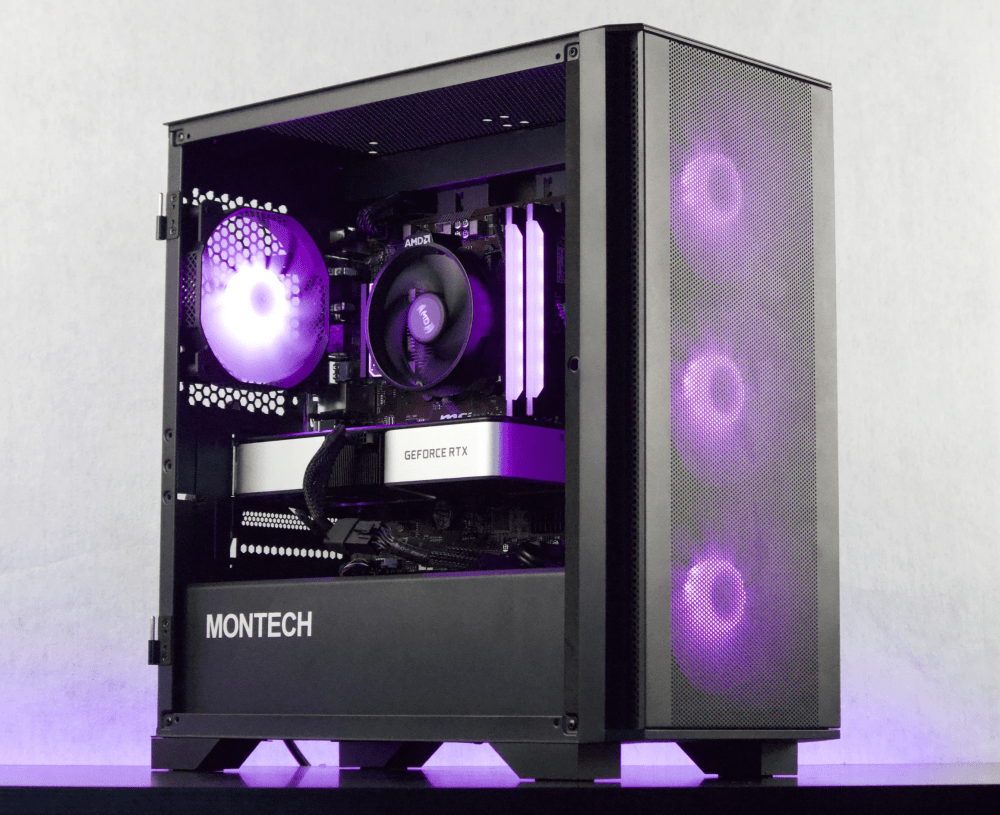Thermal paste is a crucial component in keeping your CPU cool and functioning optimally. However, over time, this paste can accumulate on the CPU pins, causing potential damage and performance issues. That's why it's essential to know how to clean thermal paste off CPU pins properly.
In this blog post, we will delve into the basics of why cleaning thermal paste off CPU pins is important. We will explore the potential risks of leaving thermal paste on the pins, such as CPU damage, compromised performance, and increased risk of overheating.
Next, we will discuss the materials needed for this task, including suitable cleaning solvents, appropriate cleaning tools, and safety equipment. Having the right supplies will ensure a safe and effective cleaning process.
The blog post will then provide readers with a step-by-step guide to cleaning thermal paste off CPU pins. From preparing the work area to applying the solvent and gently removing the thermal paste, we will guide you through each stage of the process. We will also emphasize the importance of final cleaning and checking to ensure a thorough job.
Lastly, we will share proper maintenance and precautions to avoid thermal paste mishaps in the future. This includes correct application of thermal paste, regular inspection and maintenance, as well as safe handling and storage of the CPU.
By the end of this blog post, you will have a comprehensive understanding of how to clean thermal paste off CPU pins effectively and safely. So, let's dive in and ensure your CPU stays in optimal condition!
Understanding the Basics: Importance of Cleaning Thermal Paste off CPU Pins
Thermal paste is a crucial component that helps to improve heat transfer between the CPU and the heatsink. It fills in the microscopic gaps and irregularities on the surface of the CPU and the heatsink, ensuring better thermal conductivity. However, over time, this paste can spread and get on the CPU pins, which can lead to various issues.
Cleaning thermal paste off CPU pins is important for several reasons:
1. Avoiding Potential Damage to the CPU
When thermal paste builds up on the CPU pins, it can hinder proper electrical contact between the CPU and the motherboard. This can result in poor performance, system instability, or even complete failure. Cleaning the thermal paste off the pins helps to ensure a secure and reliable connection, preventing any potential damage to the CPU.
2. Maintaining Optimal Performance
Accumulated thermal paste on CPU pins can disrupt the flow of electrical signals, leading to reduced performance. It can cause data transfer errors, decreased processing speed, and overall sluggishness of the system. By cleaning the thermal paste off the pins, you can help restore the CPU's optimal performance.
3. Preventing Overheating Issues
Thermal paste acts as a heat conductor, transferring the heat generated by the CPU to the heatsink for dissipation. When thermal paste builds up on the CPU pins, it can impede the heat dissipation process. This can result in increased temperatures, potentially leading to overheating and subsequent system instability or damage. Cleaning the thermal paste off the pins ensures proper heat transfer, helping to prevent overheating issues.
4. Ensuring Longevity of the CPU
Regularly cleaning the thermal paste off CPU pins is a crucial part of CPU maintenance. By keeping the pins clean and free from any residue, you can extend the lifespan of your CPU. A clean and well-maintained CPU is less likely to encounter performance issues or early failure.
In conclusion, cleaning thermal paste off CPU pins is essential to maintain the proper functioning and longevity of your CPU. By ensuring a clean and secure connection between the CPU and the motherboard, you can avoid potential damage, maintain optimal performance, prevent overheating, and prolong the lifespan of your CPU.
The Potential Risks of Thermal Paste on CPU Pins
Thermal paste, when applied correctly, plays a vital role in maintaining optimal CPU temperatures. However, if left unchecked or improperly managed, thermal paste on CPU pins can pose several risks and potential issues. In this section, we will explore these risks in detail.
1. Possible Damage to the CPU
When thermal paste accumulates on the CPU pins, it can lead to poor electrical contact between the CPU and the motherboard. This can result in a range of issues, from intermittent connectivity problems to complete failure of the CPU. Over time, the accumulation of thermal paste can cause corrosion or damage to the delicate pins, leading to irreversible damage and the need for a replacement CPU.
2. Implications on Performance
Thermal paste residue on CPU pins can disrupt the flow of electrical signals, leading to degraded performance. This can manifest as data transfer errors, reduced processing speed, system freezes, or crashes. The accumulation of thermal paste on the pins can create barriers to efficient communication between the CPU and other components, impacting overall system performance and responsiveness.
3. Potential for Overheating
One of the primary functions of thermal paste is to facilitate heat transfer from the CPU to the heatsink. When thermal paste builds up on CPU pins, it hinders the effective dissipation of heat. This can result in increased temperatures, leading to thermal throttling, system instability, or even permanent damage to the CPU. Overheating can also trigger the system's thermal protection mechanisms, causing it to shut down abruptly to prevent further damage.
4. Interference with CPU Upgrades or Maintenance
Accumulated thermal paste on CPU pins can make it challenging to remove or replace the CPU during upgrades or maintenance. The residue can cause the CPU to stick firmly to the socket, making it difficult to detach without potentially damaging the pins or other components. This can complicate the process of CPU replacement or interfere with routine cleaning and maintenance tasks.
5. Voiding Warranty
Many CPUs come with a warranty that covers defects and malfunctions. However, if the CPU pins are damaged due to the accumulation of thermal paste or improper cleaning methods, it may void the warranty. This can leave you responsible for any repair or replacement costs.
Understanding the potential risks of thermal paste on CPU pins highlights the importance of regular maintenance and proper cleaning techniques. By taking proactive steps to keep the pins clean and free from thermal paste residue, you can mitigate these risks and ensure the optimal performance and longevity of your CPU.
Materials Needed for Cleaning Thermal Paste off CPU Pins
To effectively clean thermal paste off CPU pins, you will need specific materials that ensure a safe and thorough cleaning process. In this section, we will outline the essential materials required to clean thermal paste off CPU pins.
1. Suitable Cleaning Solvents
-
Isopropyl Alcohol (IPA): IPA is a commonly used solvent for cleaning thermal paste. Look for high purity IPA (at least 90% concentration) to ensure efficient removal of thermal paste residue. It evaporates quickly, leaving no residue behind.
-
Thermal Paste Remover: Some specialized thermal paste removers are available in the market. These removers are specifically formulated to dissolve thermal paste without damaging the CPU or its pins. They often come in convenient spray bottles or pre-soaked wipes.
2. Appropriate Cleaning Tools
-
Lint-Free Microfiber Cloth or Coffee Filters: These materials are ideal for wiping away thermal paste residue. They are soft and won't leave behind any lint or fibers that could potentially interfere with the CPU pins.
-
Soft Bristled Brush: A small, soft-bristled brush (such as a clean makeup brush or a dedicated electronics cleaning brush) can be used to gently dislodge stubborn thermal paste from the CPU pins.
-
Toothpicks or Plastic Picks: These tools can be handy for carefully removing any dried or hardened thermal paste from tight spots between the pins. Be cautious not to apply excessive force that could bend or damage the pins.
3. Safety Equipment
-
Latex or Nitrile Gloves: Wearing gloves during the cleaning process helps prevent oils and contaminants from your hands transferring onto the CPU. It also provides a barrier between the cleaning solvents and your skin.
-
Anti-Static Wrist Strap: While not directly related to cleaning, an anti-static wrist strap is useful to prevent static discharge that could potentially damage sensitive electronic components during the cleaning process.
It's essential to gather all the necessary materials before starting the cleaning process to ensure a smooth and efficient experience. By having the right solvents, cleaning tools, and safety equipment, you can effectively clean the thermal paste off CPU pins without causing any damage.
Step-by-Step Guide to Cleaning Thermal Paste off CPU Pins
Cleaning thermal paste off CPU pins requires a systematic approach to ensure a thorough and safe process. In this section, we will provide a step-by-step guide to help you clean thermal paste off CPU pins effectively.
Step 1: Preparing the Work Area
- Start by gathering all the necessary materials mentioned in the previous section.
- Ensure you are working in a well-ventilated area with good lighting.
- Power off your computer and unplug it from the power source.
- Take proper precautions to discharge any static electricity by using an anti-static wrist strap or by touching a grounded metal object before handling the CPU.
Step 2: Applying the Solvent
- Put on latex or nitrile gloves to protect your hands and prevent any oils or contaminants from transferring to the CPU.
- If using isopropyl alcohol (IPA), dampen a lint-free microfiber cloth or coffee filter with the alcohol. If using a thermal paste remover, follow the instructions provided on the product packaging.
- Gently hold the CPU by its sides or edges, avoiding contact with the pins.
- Carefully apply the solvent-soaked cloth or wipe to the pins, ensuring you cover the entire pin surface. Be cautious not to apply excessive pressure or allow the solvent to drip onto other components.
Step 3: Gently Removing the Thermal Paste
- Once the solvent has had a few moments to dissolve the thermal paste, use the soft bristled brush to gently scrub the CPU pins. This will help dislodge any stubborn residue.
- Use toothpicks or plastic picks to carefully remove any dried or hardened thermal paste from tight spots between the pins. Take care not to bend or damage the pins during this process.
- If necessary, reapply the solvent to the cloth or wipe and continue wiping the pins until all thermal paste residue is removed.
Step 4: Final Cleaning & Checking
- After removing the thermal paste, use a clean section of the lint-free cloth or a fresh coffee filter to wipe the CPU pins again. Ensure there is no remaining residue.
- Inspect the CPU pins closely under good lighting to ensure they are clean and undamaged. Look for any bent or misaligned pins and straighten them carefully if needed.
- Allow the CPU pins to air dry completely before reinstalling the CPU or applying new thermal paste.
Step 5: Proper Maintenance and Precautions
- Apply a small amount of fresh thermal paste to the CPU before reinstalling it.
- Practice regular inspection and maintenance to prevent the buildup of thermal paste on the CPU pins in the future.
- Handle the CPU with care, avoiding unnecessary contact with the pins or exposing it to excessive pressure.
By following this step-by-step guide, you can effectively clean thermal paste off CPU pins, ensuring optimal performance and longevity of your CPU. Remember to exercise caution and patience throughout the process to avoid any damage to the CPU or its pins.
Proper Maintenance and Precautions to Avoid Thermal Paste Mishaps
Maintaining proper care and taking necessary precautions can help prevent thermal paste mishaps and ensure the longevity of your CPU. In this section, we will discuss essential maintenance practices and precautions to follow.
1. Correct Application of Thermal Paste
-
Use the appropriate amount: Apply the right quantity of thermal paste. Too much can lead to excess spreading and potential contact with CPU pins, while too little may result in insufficient heat transfer.
-
Apply it evenly: Spread the thermal paste evenly across the CPU surface. Uneven application can cause hotspots and hinder efficient heat dissipation.
-
Follow manufacturer guidelines: Refer to the CPU and thermal paste manufacturer's recommendations for specific instructions on application techniques and paste types.
2. Regular Inspection and Maintenance
-
Visual inspections: Regularly inspect your CPU for any signs of thermal paste buildup around the pins. If you notice any residue, promptly clean it off following the steps outlined earlier.
-
Scheduled cleaning: Consider incorporating routine maintenance of cleaning the CPU pins into your computer maintenance schedule. This practice helps prevent the accumulation of thermal paste over time.
3. Safe Handling and Storage of the CPU
-
Handle with care: When removing or installing the CPU, handle it by its sides or edges, avoiding contact with the pins. Excessive force or mishandling can cause bent or damaged pins.
-
Store in a protective case: When not in use, store your CPU in a protective case or container to shield it from dust, debris, and potential damage.
4. Proper System Cooling
-
Adequate airflow: Ensure your computer has proper airflow and cooling mechanisms in place. Improper ventilation can result in increased heat levels, potentially affecting the performance and lifespan of your CPU.
-
Regularly clean the heatsink: Periodically clean the heatsink to remove any dust or debris that can restrict airflow and compromise cooling efficiency.
5. Avoid Excessive Overclocking
-
Overclocking caution: If you engage in overclocking your CPU to increase performance, exercise caution. Overclocking generates additional heat, and inadequate cooling or excessive voltages can exacerbate thermal paste issues.
-
Monitor temperatures: Use software utilities to monitor CPU temperatures regularly. High temperatures can indicate inadequate cooling or potential thermal paste issues.
By following these maintenance practices and precautions, you can minimize the risk of thermal paste mishaps and ensure the optimal performance and lifespan of your CPU. Regular inspections, proper handling, adequate cooling, and adherence to manufacturer guidelines are key to maintaining a healthy CPU.
Ready to level up your game? Check out Jawa for the best deals on PC gaming hardware





